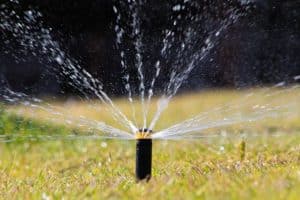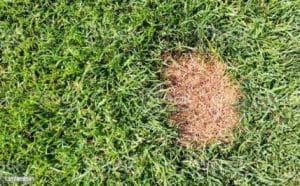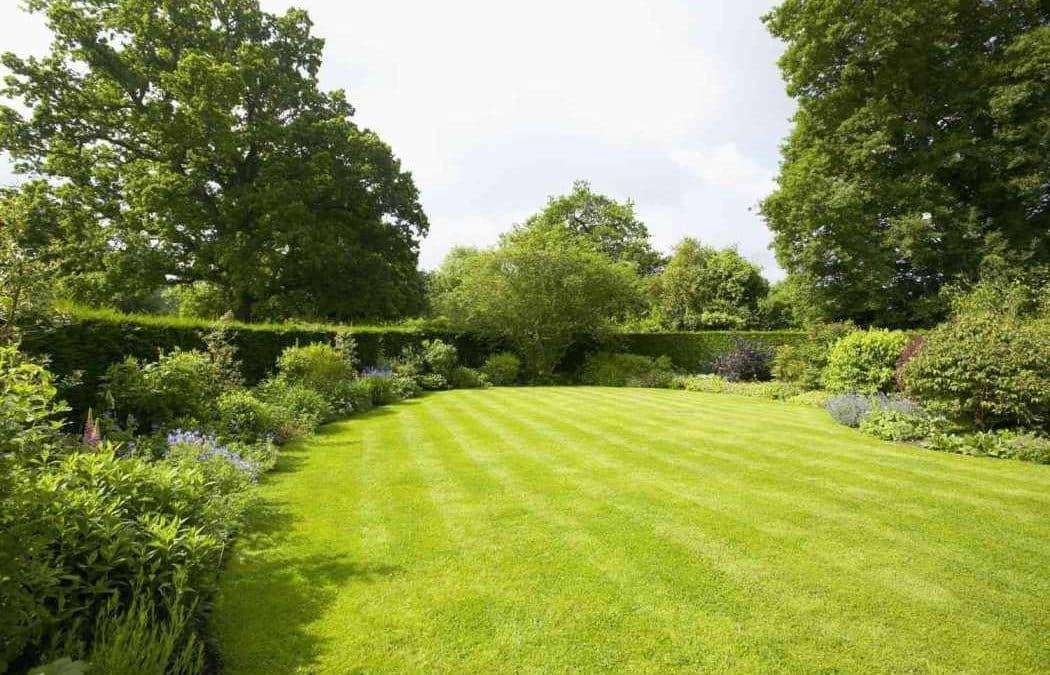A lush green lawn is a sight to behold – and the envy of every neighbour. However, it takes more than just watering and mowing to achieve that perfect green lawn. With the right care and attention, it is possible to transform even the most lacklustre lawn into a verdant oasis. In this blog post, we’ll provide you with 10 simple steps to get a greener lawn.
Click to read what you'll find in this post
Step 1: Know Your Lawn
Before you start any lawn care routine, it’s essential to understand your lawn grass type. Different types of grass require different types of care. In Perth, the most common grass types are Couch, Buffalo, and Kikuyu. Understanding your lawn type will help you determine the best watering and fertilising schedule.
Step 2: Water Your Lawn Correctly

In Perth, watering your lawn is crucial. During the hot summer months, it’s important to give your lawn enough water to prevent it from drying out. However, it’s equally important not to overwater. Overwatering can lead to root rot and other fungal diseases. As a rule of thumb, water your lawn deeply once or twice a week rather than lightly every day. Make sure to check with your local reticulation company to be sure your gardens and lawns are getting the water coverage and amount they need!
Step 3: Fertilise Your Lawn
Fertilising your lawn is essential to ensure it remains healthy and green. It’s best to fertilise your lawn in the spring and summer months, when the grass is actively growing. Choose a fertiliser that is suitable for your lawn type and avoid using too much fertiliser as it can burn your lawn.
Step 4: Mow Your Lawn Regularly
Here are some lawn mowing tips for a healthy lawn. Mowing your lawn is necessary to keep it looking neat and tidy. However, it’s important not to cut your lawn too short as this can cause stress to the grass and make it more susceptible to disease. In Perth, it’s recommended to keep your lawn between 2.5 to 4 cm in height.
Step 5: Aerate Your Lawn
Aerating your lawn is an essential step in maintaining a healthy lawn. Aerating helps to improve water and nutrient uptake, reduces soil compaction, and promotes deeper root growth. In Perth, it’s recommended to aerate your lawn in autumn or spring.
Step 6: Control Weeds
Weeds can quickly take over your lawn and cause it to look unsightly. It’s important to remove weeds regularly and use a selective herbicide to prevent them from coming back. Be careful when choosing a herbicide as some can damage your lawn. It’s important to know the best methods for weeding lawns to keep them healthy and vibrant.
Step 7: Repair Bald Patches
Bald patches in your lawn can be caused by a variety of factors, including pests, disease, and poor soil conditions. It’s important to address the underlying issue before repairing the patch. Once you’ve identified the problem, reseed the area with a grass seed suitable for your lawn type.

Step 8: Provide Shade
In Perth, the hot sun can quickly dry out your lawn, causing it to turn brown. Providing shade to your lawn can help prevent it from drying out. Plant trees or install a shade sail to provide your lawn with the necessary shade. A good tip is to plant ground cover instead of lawn in areas which get zero sunlight, like at the base of trees, rather than trying to keep a lawn alive without sunlight amid roots and debris.
Step 9: Remove Lawn Clippings
Leaving lawn clippings on your lawn can prevent sunlight and air from reaching the grass, causing it to turn yellow. It’s important to remove lawn clippings regularly and dispose of them correctly.
Step 10: Hire The Experts

Achieving a green lawn takes time and effort. By following these 10 simple steps, you’ll be well on your way to a lush, green lawn.
If you’re struggling to get your lawn looking green and lush, it’s worth seeking professional help. Our garden and lawn care experts in Perth can help you keep your lawns and gardens looking healthy and lush with our garden maintenance services in Perth.
Contact us on 08 6263 4645 today to book in a service – your lawn and garden will thank you for it!
Want more expert lawn care tips?
Here are our answers to some frequently asked questions about getting a greener lawn in Perth:
Q: What type of fertiliser should I use for my lawn in Perth?
A: The type of fertiliser you use will depend on your lawn type. In general, a slow-release fertiliser with a balanced NPK ratio is suitable for most lawns in Perth. It’s best to fertilise your lawn in the spring and summer months when the grass is actively growing.
Q: Can I mow my lawn when it’s wet?
A: It’s not recommended to mow your lawn when it’s wet. Wet grass can clog up your lawn mower and make it harder to cut your lawn evenly. It’s best to wait until your lawn is dry before mowing.
Q: How can I tell if my lawn needs aeration?
A: If your lawn is looking thin or patchy, it may need aerating. You can also perform a soil compaction test by pushing a garden fork into the ground. If the fork doesn’t go in easily, it’s likely that your soil is compacted and in need of aeration.
Q: How do I repair bald patches in my lawn?
A: Bald patches in your lawn can be caused by a variety of factors, including pests, disease, and poor soil conditions. Once you’ve identified the problem, reseed the area with a grass seed suitable for your lawn type. Keep the area moist until the grass seed has germinated and established.
Q: How can I prevent weeds from growing in my lawn?
A: Regular mowing and fertilising can help prevent weeds from growing in your lawn. However, it’s also important to remove weeds regularly and use a selective herbicide to prevent them from coming back.
Q: How can I provide shade for my lawn?
A: Planting trees or installing a shade sail can provide your lawn with the necessary shade. However, it’s important not to plant trees too close to your lawn as their roots can compete with your grass for water and nutrients.
Q: Do I need professional help to get a greener lawn?
A: While it’s possible to achieve a green lawn on your own, seeking professional help can save you time and effort. Lawn care experts in Perth can provide you with a personalised lawn care plan and recommend the best products for your lawn type. They can also help diagnose and treat any issues with your lawn.

